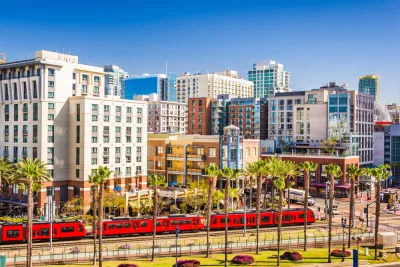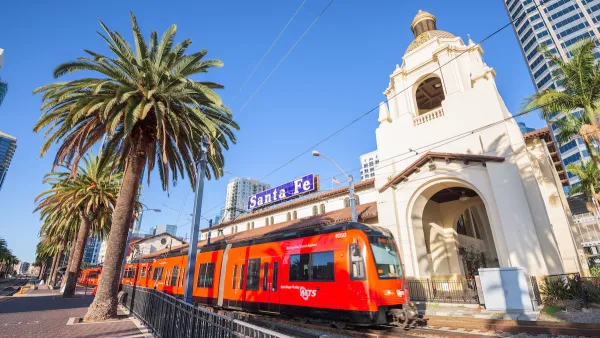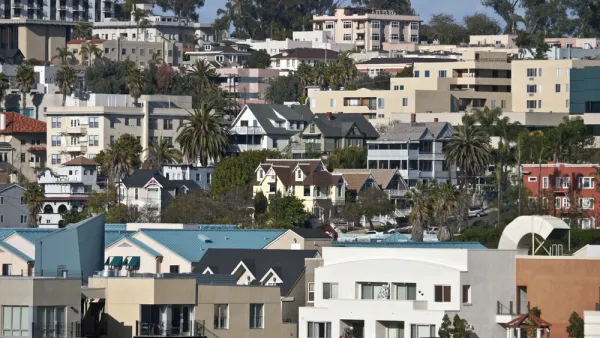Sprawl might relieve the housing crisis, but it would also exacerbate the climate crisis. Tough choices will be necessary in regions like San Diego, where the question of where to accommodate growth is very much in question.

Joshua Emerson Smith locates the intersection of the competing dynamics of dual crises, of climate and housing, in the region of San Diego:
The San Diego region is on the front lines of a statewide push to abandon suburban development in favor of building denser urban communities — a vision many California leaders have called for to curb greenhouse gases from cars and trucks.
Forcing existing neighborhoods, however, to shoulder increasingly more development is proving expensive and slow at a time when San Diego and many other regions are suffering a severe lack of affordable housing.
Some policy makers in the San Diego region want to "[widen] highways and [build] large master-planned communities far from urban job centers," according to Smith, as a response to the ongoing housing crisis in San Diego. Some 10,000 units of greenfield development on the periphery of the region are currently under consideration for approval. Local politicians around the region are pushing for projects to state routes 78 and 56 to relieve congestion and accommodate growth.
Environmental grounds like the Sierra Club are pushing back on sprawl, according to Smith, while the regional planning agency that goes by the acronym SANDAG is having trouble convincing local officials to support an urban and transit oriented vision of growth for the region. An exception can be found with San Diego Mayor Kevin Falcouner, who has spearheaded and supported a series of pro-development reforms in the city, including a law approved in March 2019 that ends parking minimums for all future developments in the city.
The article includes soundbites and opinions on the development vision of the future for the region, and proposed solutions to the housing and climate crises, from politicians and advocacy organizations on all sides of the issues.
FULL STORY: How the fight against climate change is exacerbating San Diego’s affordable housing crisis

National Parks Layoffs Will Cause Communities to Lose Billions
Thousands of essential park workers were laid off this week, just before the busy spring break season.

Retro-silient?: America’s First “Eco-burb,” The Woodlands Turns 50
A master-planned community north of Houston offers lessons on green infrastructure and resilient design, but falls short of its founder’s lofty affordability and walkability goals.

Delivering for America Plan Will Downgrade Mail Service in at Least 49.5 Percent of Zip Codes
Republican and Democrat lawmakers criticize the plan for its disproportionate negative impact on rural communities.

Test News Post 1
This is a summary

Test News Headline 46
Test for the image on the front page.

Balancing Bombs and Butterflies: How the National Guard Protects a Rare Species
The National Guard at Fort Indiantown Gap uses GIS technology and land management strategies to balance military training with conservation efforts, ensuring the survival of the rare eastern regal fritillary butterfly.
Urban Design for Planners 1: Software Tools
This six-course series explores essential urban design concepts using open source software and equips planners with the tools they need to participate fully in the urban design process.
Planning for Universal Design
Learn the tools for implementing Universal Design in planning regulations.
EMC Planning Group, Inc.
Planetizen
Planetizen
Mpact (formerly Rail~Volution)
Great Falls Development Authority, Inc.
HUDs Office of Policy Development and Research
NYU Wagner Graduate School of Public Service





























